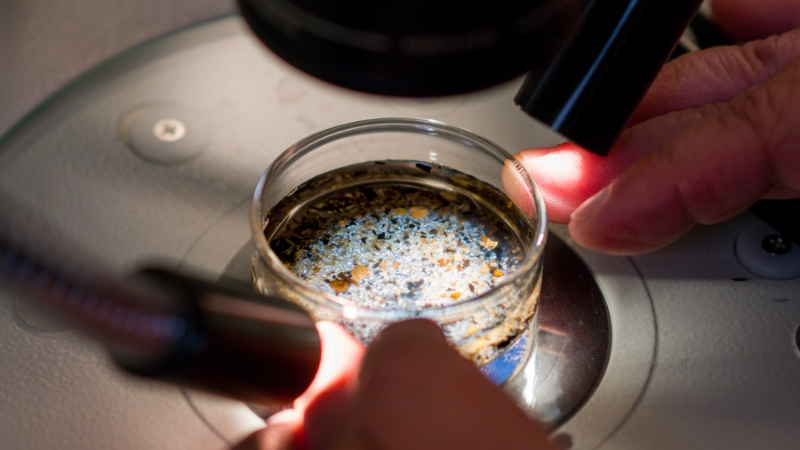 Image Credit: MediaNews Group / Orange County Register via Getty Images / Contributor / Getty Images
Image Credit: MediaNews Group / Orange County Register via Getty Images / Contributor / Getty Images Microplastics have been discovered in male and female reproductive fluids, raising alarming questions about their influence on fertility.
Researchers examined follicular fluid from 29 women and seminal fluid from 22 men. These reproductive fluids both play a vital role in conception.
A wide range of microplastic polymers were discovered in the fluid samples. Polytetrafluoroethylene (PTFE), polystyrene (PS), polyethylene terephthalate (PET), polyamide (PA), polypropylene (PP) and polyurethane (PU) were found in both groups.
Microplastics were present in 69% of the follicular samples analyzed. The most common polymer was PTFE, which is widely found in non-stick coatings, including non-stick cookware. Over 30% of samples contained this polymer.
Microplastics were present in a smaller number—55%—of semen samples. PTFE was again the most common polymer, detected in 41% of samples.
Lead researcher Dr. Emilio Gomez-Sanchez commented, “Previous studies had already shown that microplastics can be found in various human organs. As a result, we weren’t entirely surprised to find microplastics in fluids of the human reproductive system, but we were struck by how common they were—found in 69% of the women and 55% of the men we studied.”
A study last year found microplastics in 100% of semen samples taken from a group of men in China.
More than nine billion tons of plastic are estimated to have been produced between 1950 and 2017, with over half of that total having been produced since 2004. The vast majority of plastic ends up in the environment in one form or another, where it breaks down, through weathering, exposure to UV light and organisms of all kinds, into smaller and smaller pieces, becoming microplastics and then nanoplastics.
Within our homes, microplastics are mainly produced when synthetic fibres from clothes, furnishings, carpets and other plastic objects are shed. They accumulate in large quantities in dust and float around in the air, which we then inhale.
New research is already linking microplastics to the full range of chronic diseases, from Alzheimer’s and autism to obesity and diabetes. As well as the physical properties of microplastics themselves, which allow them to cause inflammation and physical blockages in the body’s tissues, they also act as vectors for toxic chemicals, transporting them deep into the body’s tissues, including the brain, lungs, liver and reproductive organs.
Microplastic exposure is also being linked to the dire fertility crisis affecting the Developed World, including catastrophic declines in sperm counts that experts believe could render natural reproduction impossible within decades.
If you want to know more about microplastics, including how to protect yourself against them, read our detailed primer, “The Microplastic Menace.”
🚨MASSIVE TERROR ALERT: Top Iranian Mullah Issues Death Fatwa Against Trump/America!


